While Halloween is not widely celebrated in France, every region in the country is full of mysterious stories, local myths and legends, and Paris is no exception. Cemeteries, ossuaries, gothic cathedrals, gruesome execution sites – you name it, Paris has got it. Some of these urban legends date back to the Middle Ages, and strolling the city’s narrow, winding streets in search of these haunted places and ghosts from the past can be a great way to have some spooky fun! Here are some of our favorites, as well as other creepy places you can visit throughout France.
By Marianne perret
le cimetière du père lachaise
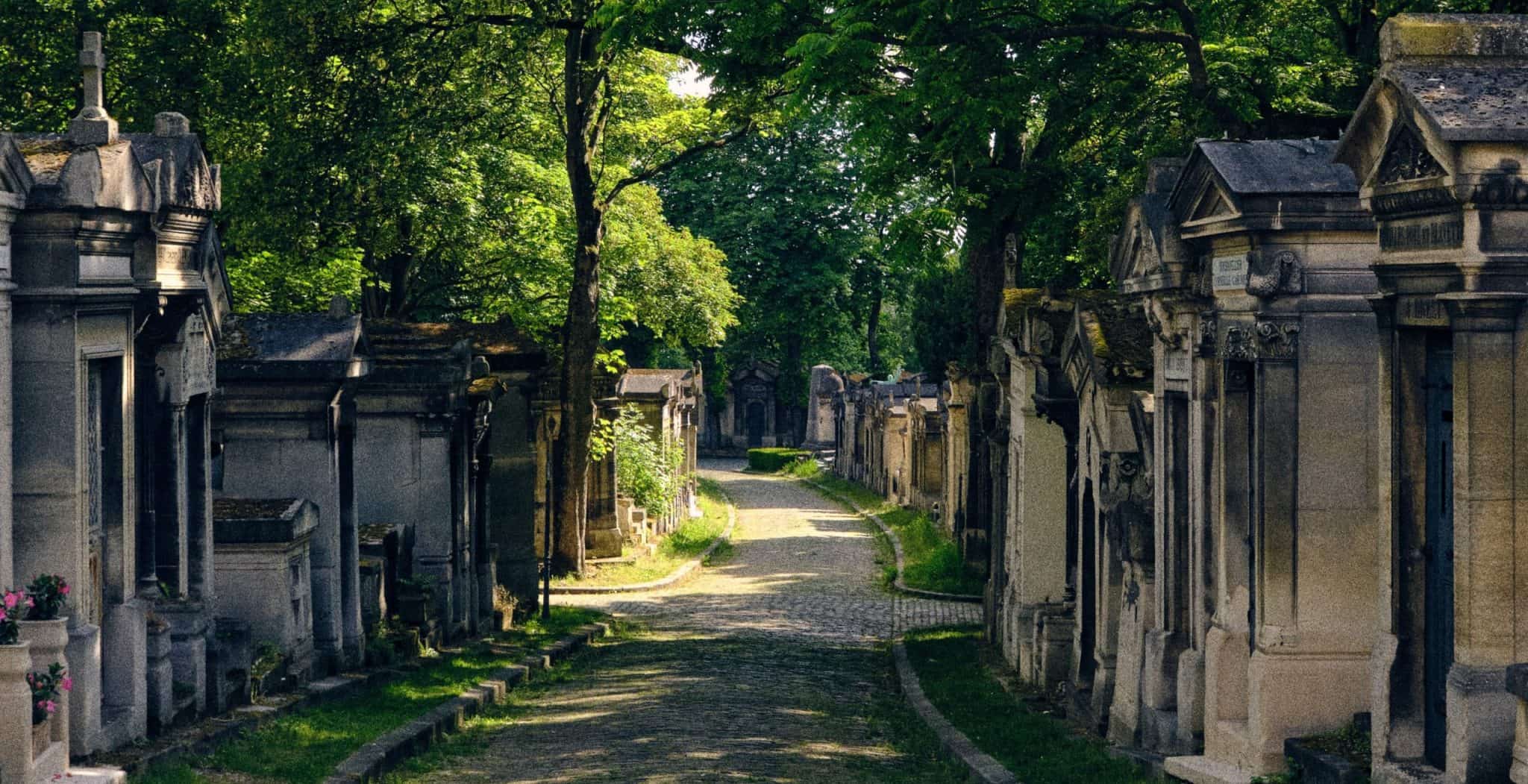
Located in the 20th arrondissement and opened in 1804, Père Lachaise is the largest cemetery in Paris and the most visited necropolis in the world. It features breathtaking art and sculptures and is a must-see on a trip to the city. According to the official website of the City of Paris, one million people have been buried there to date – and there’s a chance you’ll spot a famous ghost or two! Said to be among the most haunted cemeteries in the world, it’s the burial site of several well-known names like Edith Piaf, Oscar Wilde, Jim Morrison, Gertrude Stein, Molière, Marcel Proust, Honoré de Balzac, Camille Pissarro, Frédéric Chopin and Jean de la Fontaine, among many others.
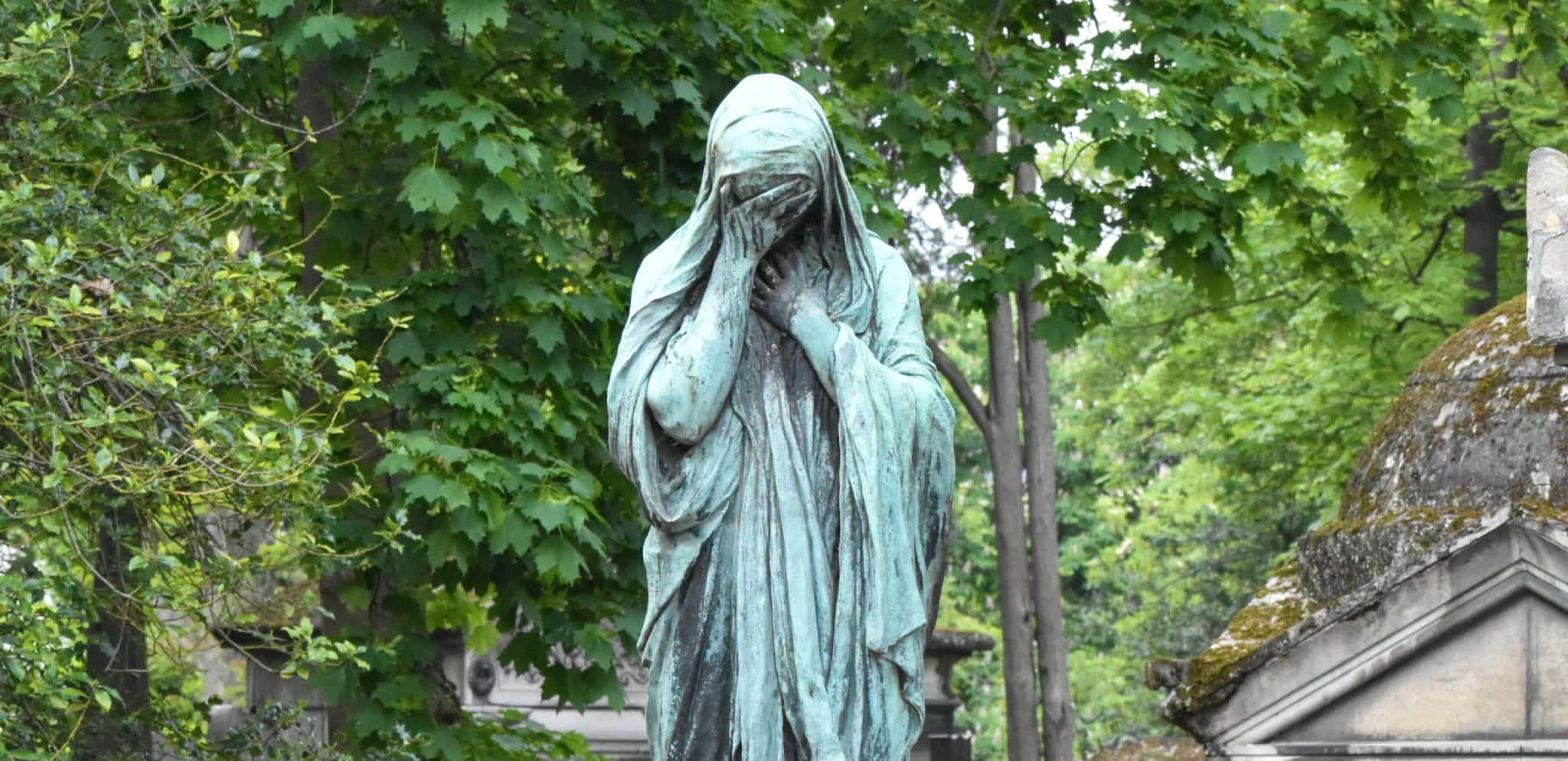
Some visitors have reported being overwhelmed by a certain eeriness, and shivers running up and down their spine; others have said that the cemetery leaves them filled with a deep sense of unnatural calm. Watch out for ghostly sightings and the strange orbs that sometimes appear in photos taken around the cemetery. If you’re lucky, Chopin might even pop in for a visit – he’s the most widely seen celebrity ghost in Père Lachaise, as well as Jim Morrison, who’s said to appear in photographs taken near his grave.
Practice your French: Watch this video to learn all about the history of the cemetery
Les catacombes

The Catacombs of Paris hold the remains of more than six million people in a tunnel network built within Paris’ ancient stone quarries. Extending south from the Barrière d’Enfer (“Gate of Hell”), the former city gate, these ossuaries were created as part of an effort to clean up the city’s overflowing cemeteries in the late 18th century, when nightly processions of covered wagons transferred remains from all over the city to a mine shaft opened near the Rue de la Tombe-Issoire. The ossuaries remained largely forgotten until they became a novelty venue for concerts and other private events in the 19th century. After further renovations and the construction of entrances around Place Denfert- Rochereau, they opened to the public in 1874. As one enters the Catacombs, a sign above the entrance reads “Arrête ! C’est ici l’empire de la Mort” (“Stop! This is the empire of Death”).
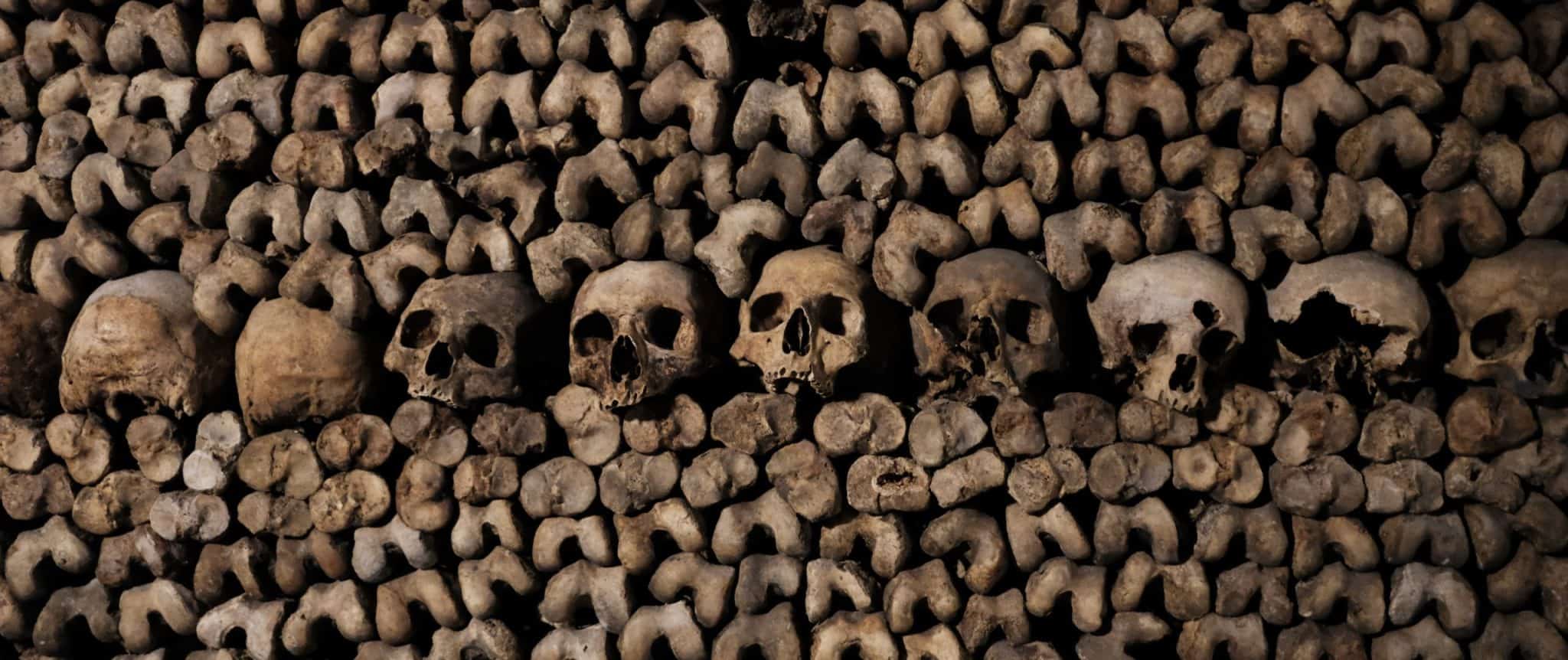
Secret entrances exist throughout Paris: it’s possible to enter the Catacombs via the sewers, metro and certain manholes. The portion open to the public is only a small part of an extensive network of tunnels, which spans about 280 kilometers (170 miles) in length and criss-crosses large sections of the city. Though some tunnels have plaques indicating the name of the street above, it’s easy to get lost. Some passages are very low or narrow, and others are partially flooded. Because of these dangers, accessing the Catacombs without an official escort is illegal, and there’s a €60 fine for urban explorers (called “cataphiles”) who get caught by the special police that patrol the tunnels (colloquially known as “cataflics”). As if the complex network of dark passageways stacked with skulls and skeletons weren’t spooky enough, there are several stories of people getting lost in the Catacombs and never being found alive again.
Practice your French: Listen to this podcast episode about Paris’ cataphiles and take a short tour of the catacombs in this Brut video.
Notre-dame de paris

The Notre-Dame de Paris cathedral is one of France’s top tourist attractions, as well as the alleged home of countless ghosts. The Cathedral’s haunting ambiance is heightened by the stone faces carved into its walls, and the grotesque gargoyles whose faces grow all the more sinister as night falls. Stories have been reported of female ghosts seen flitting between gargoyles, as well as spirits of French kings and monks roaming within the walls.
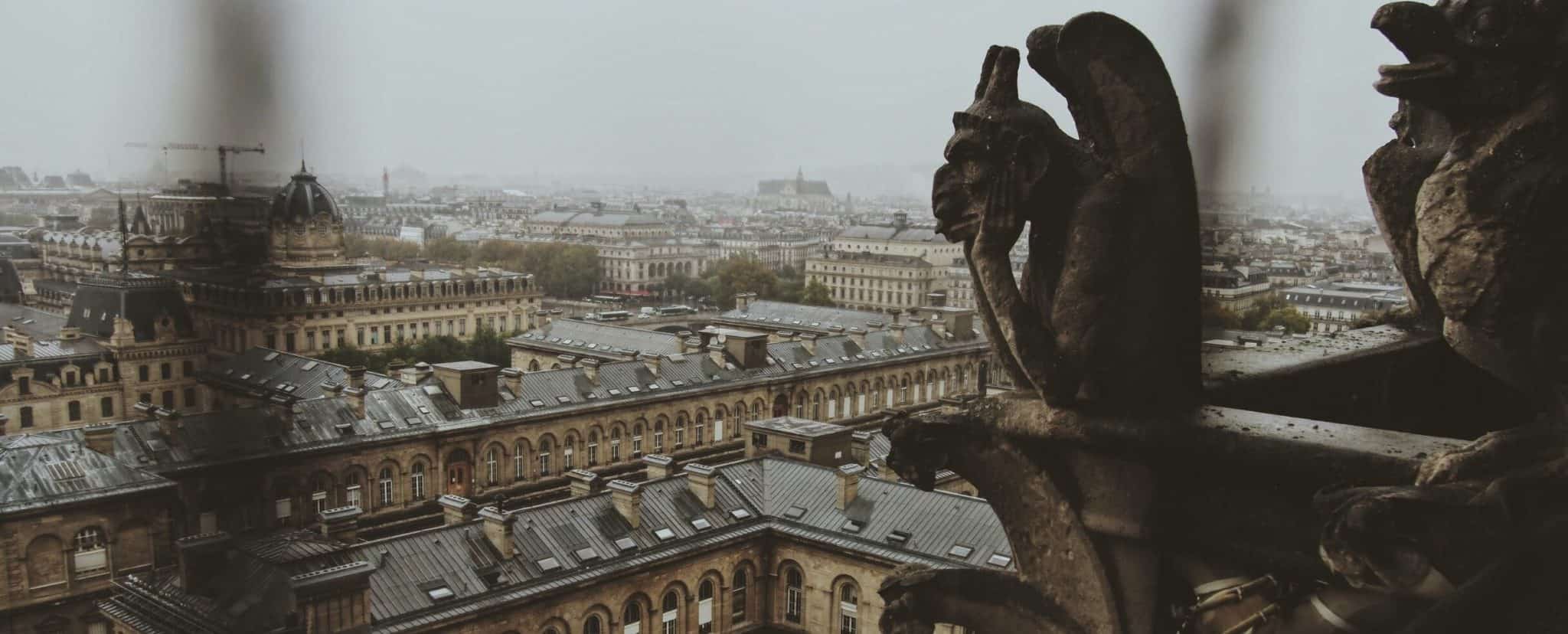
Another famous legend is that of the Devil’s Gates: When visiting Notre-Dame is again possible, you might notice the remarkable ironwork on the Cathedral’s side doors; it’s said that the welder responsible for creating them wasn’t able to meet the strict deadline before the Cathedral’s 4 inauguration in 1345. So, he made a deal with the devil to have the intricate work finished on time in exchange for his soul.
Practice your French: Read this article and discover all the legends of the iconic cathedral.
Bastille
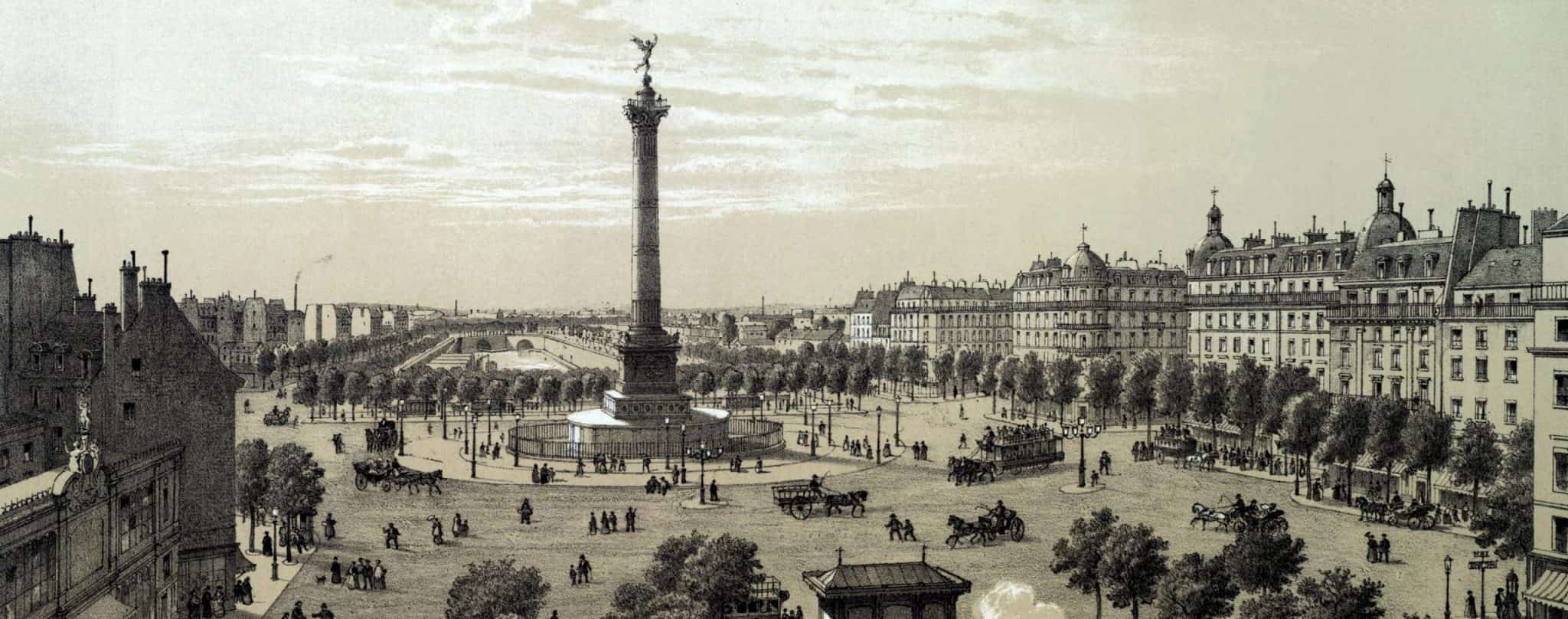
The infamous Bastille was once a mighty prison fortress with towers reaching heights of eighty feet and surrounded by a moat. It was home to many famous prisoners including the Marquis de Sade and the mysterious figure known as the Man in the Iron Mask. The place witnessed various forms of suffering and distress within its walls before it was stormed at the start of the French Revolution. The Place de la Bastille now stands in the prison’s former location; some of the ruins of the Bastille may still be found on Boulevard Henri IV, and there are several reports of ghostly sightings and paranormal encounters at the ruins, with visitors feeling unnerved and noticing strange smells.
Practice your French: Watch this short video to learn all about the history of the Bastille!
L’Opera garnier

The Palais Garnier has been a source of many legends since construction started on the building in 1861, feeding the imagination of Gaston Leroux, the writer of “The Phantom of the Opera” (1910). A worldwide success, the novel was largely inspired by the story of Ernest, a pianist disfigured in a 1873 fire. Having lost his companion in the disaster, the pianist sank into hopelessness and hid in the opera’s basement to isolate himself from the world. Ernest spent the rest of his life in the dark corners of the building, eating fish from the underground lake (which can still be seen on guided tours of the Opéra), and his cries of despair could be heard backstage. Since his disappearance, several strange events have occurred in the Opéra Garnier: a machinist was found hanged, but the rope had somehow vanished; a chandelier fell during a performance, instantly killing the spectator in seat n°13. To this day, box n°5 is permanently rented by a mysterious stranger. This box is strategically located so that its occupant can see but not be seen.
Practice your French: Read this article to learn more about Gaston Leroux and the legend of Le fantôme de l’Opéra; and watch this video to discover the secrets of the opera’s underground lake
Le parc montsouris

This beautiful park in the south of Paris may seem like an idyllic place for an afternoon stroll or a cozy picnic lunch, but be wary of what you might encounter! The Parc Montsouris was once the testing area for the guillotine, and is now said to be haunted by various headless ghosts who can still be seen roaming around the park.
Practice your French: Read this article to learn more about the curse of the Parc Montsouris
THE DEMON BARBER OF RUE CHANOINESSE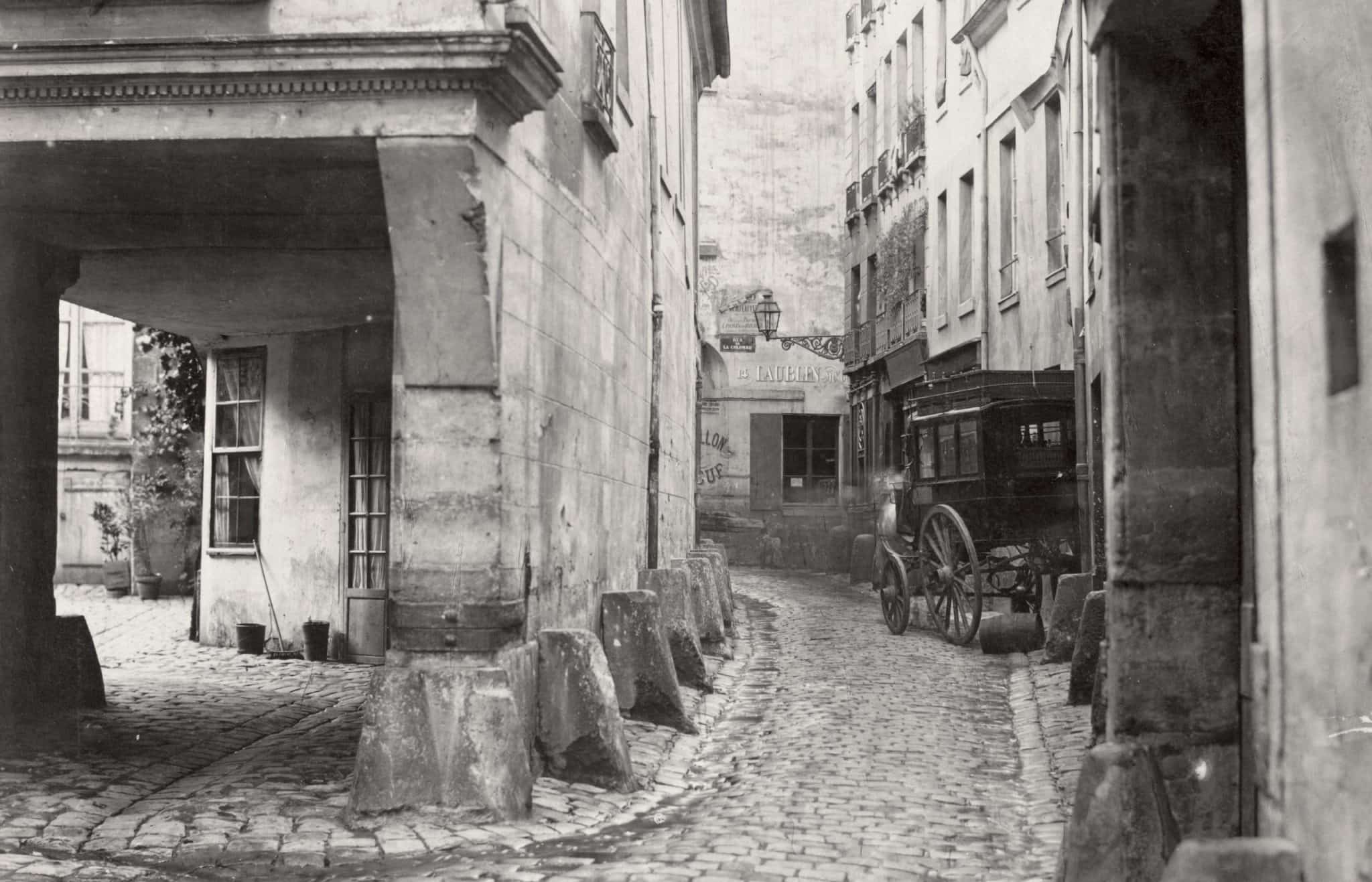
Wander along rue Chanoinesse today and you’ll see one of the prettiest cafés in the city, Au Vieux Paris d’Arcole, which boasts breathtaking views of Notre-Dame. However, this wasn’t always the case, and the street was once famous for the sordid Affaire de la rue des Marmousets (“The Case of Marmousets street”, former name of rue Chanoinesse): Back in the Middle Ages, the rue des Marmousets was known across Paris for its delicious pâtés and meat pies. As the story goes, there was a barber and a pastry chef working next door to one another who had a rather macabre deal. The barber would kidnap and butcher his victims and pass them through a trapdoor which opened directly into the cellar of the pastry chef who would, you guessed it, bake them into pies. The practice is said to have continued for several years before the pair were caught; they were burned alive in a public square, and their houses were razed. One of Paris’ most famous urban legends, it inspired the story of Sweeney Todd.
Practice your French: Read this article to learn all about the case… en français!
THE HAUNTED HOUSE of avenue Frochot

Avenue Frochot is a charming private cul-de-sac in the Pigalle district (9th arrondissement). Protected by a fence, the lane is lined with beautiful mansions, with many famous artists having settled there since the 19th century. The villa at #1 was the scene of the gruesome murder of a chambermaid at the beginning of the 20th century. According to the legend, her spirit haunts the place and sinister noises can be heard at night. Since then, all the subsequent owners of the house have fallen victims to the servant’s torments, including the singer Sylvie Vartan, who after purchasing the house refused to move in for unknown reasons. More mysterious deaths were reported, until someone had the villa exorcized.
Practice your French: Watch this video for an exclusive tour of this haunted house
Versailles
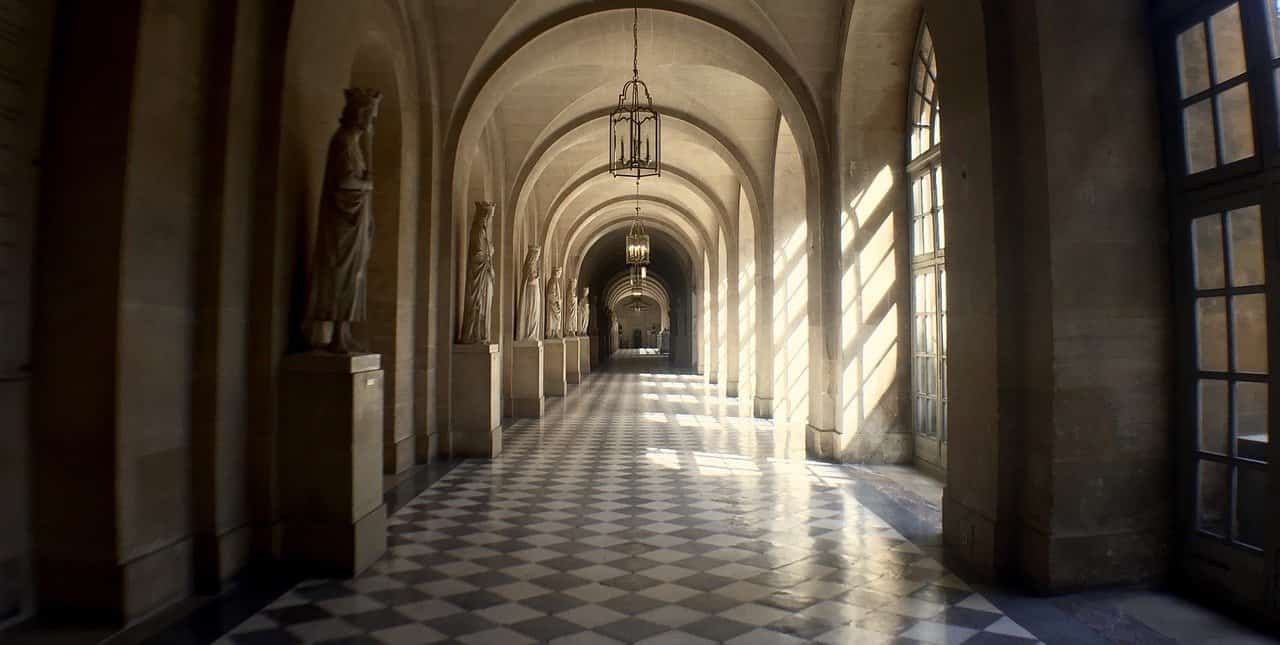
Located just twelve miles outside of Paris, the Palace of Versailles and its Royal Gardens are among the top attractions in France, and one of the most haunted places in the entire country. Both the gardens and the chateau are known for ghost sightings, with orbs and ghostly figures appearing in photos. Ghost enthusiasts from all over the world flock to the gardens, where Queen Marie Antoinette’s headless ghost is said to be frequently spotted roaming around. People have also reported stumbling into a time slip while in Versailles, suddenly finding themselves in the middle of an 18th-century party with ghosts in period clothing.
Practice your French: Watch this video to learn all about Versailles’ ghosts
la villa landru
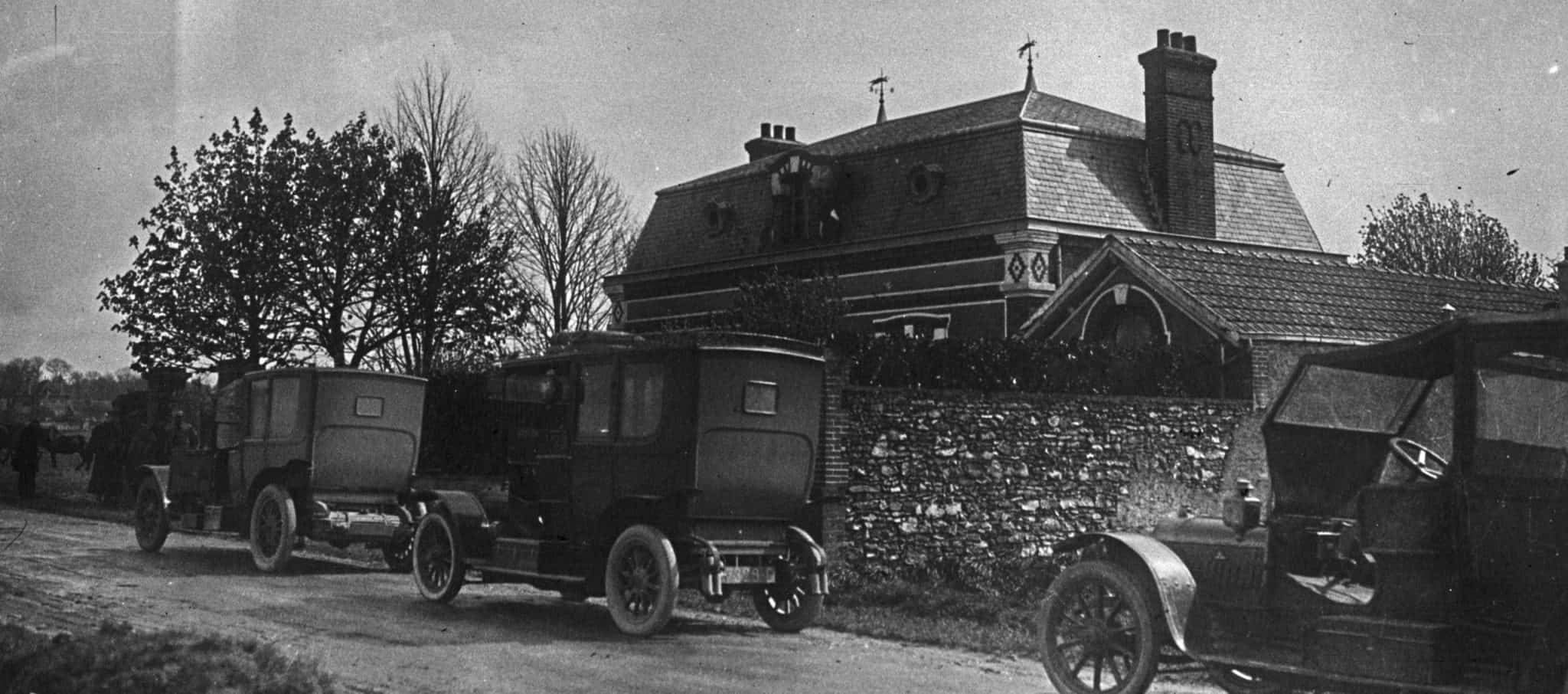
The Landru Villa in the Yvelines town of Gambais near Paris was the site of grisly murders committed by serial killer Henri Landru. Landru was a conman and dealer in second-hand furniture, paintings and objets d’art who targeted rich, lonely women. Many of his targets were World War I widows, earning Landru the nickname “Bluebeard”. He killed seven of his eleven victims in this villa between December 1915 and January 1919, and disposed of their bodies by burning them in his stove. After Landru’s trial and execution in 1922, the villa quickly became a tourist attraction. It was bought by an entrepreneur who opened a hotel-restaurant, with a museum dedicated to Landru’s crimes. It is now a private residence, though still a draw for murder tourists. In 1963 it supplied an authentic location for Claude Chabrol’s film about Landru.
Practice your French: Read this article retracing the history of the cursed villa
le mont saint michel
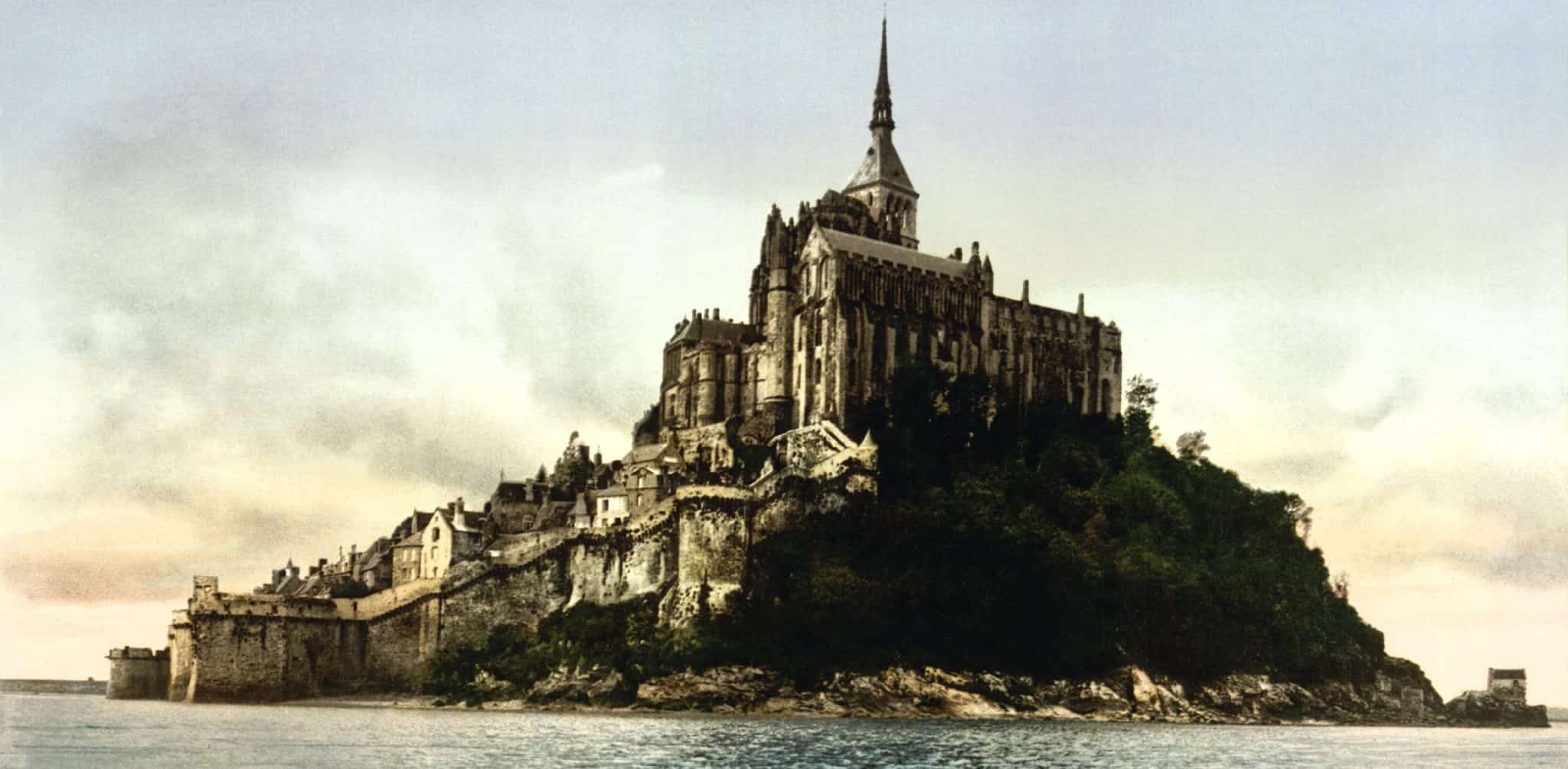
A UNESCO World Heritage Site, this island off the coast of Normandy is connected to the mainland by a causeway that is submerged at high tide. On one of the gorier days in its history, a battle of the Hundred Years’ War took place on the surrounding beaches. Captain Louis d’Estouteville led his men in the slaughter of more than 2,000 Englishmen. Before the water returned, the sand was stained red with their blood as far as the eye could see. Their spirits, those of numerous monks who lived and died here, and even that of d’Estouteville himself are believed to haunt the island.
Practice your French: Read this article to learn all about the history and secrets of the Mont Saint Michel and its abbey
l’abbaye de mortemer

Mortemer Abbey is a former monastery located between Lyons-la-Forêt and Lisors, southeast of Rouen. During the 12th century, the future Empress Matilda was forced by her father King Henry I to spend five years locked in a room in the abbey.
After her death in Rouen, she is said to have come back to haunt the place; her ghost is known as the White Lady. Later on, four monks were murdered during the French Revolution and their ghosts are also said to haunt the abbey. Visitors of the abbey have reported hearing ominous noises and feeling a strange presence. There are a number of other legends and ghost stories associated with the place, earning it the reputation of France’s most haunted abbey – pictures of its ruins will give you chills.
Practice your French: Watch this video for a story on the White Lady who haunts the abbey
Other legends from Normandy…
The Eure department of Normandy is home to several other spooky places, such as the Church of Incarville, said to be haunted by its former priest, and the allegedly cursed Manor of Mists : Knights Templar, who were accused of practicing black magic, were kept and tortured there in the 13th century; knocks on doors, the sound of ringing bells coming from the attic, icy winds sweeping through the halls and objects moving on their own have all been reported.
LES MONTS d’arrée

The Monts d’Arrée are an ancient mountain range in western Brittany, an area rife with myths and legends of Celtic folklore – like the nearby Forêt de Huelgoat and Forêt de Paimpont, two possible locations of the mythical Brocéliande Forest of Arthurian legend. Stories of fairies and elves abound, but the mysterious, desolate allure of the place made it the perfect backdrop for spookier tales about the Grim Reaper. One area called Yeun Elez – “marshes of hell” in the local Breton language, reflecting its misty, windswept atmosphere – is said to be one of the gates of hell. Visit at your own risk!
Practice your French: Watch this video to discover the region with locals and check out this page for a detailed list of all the legends of the area
The tévennec lighthouse
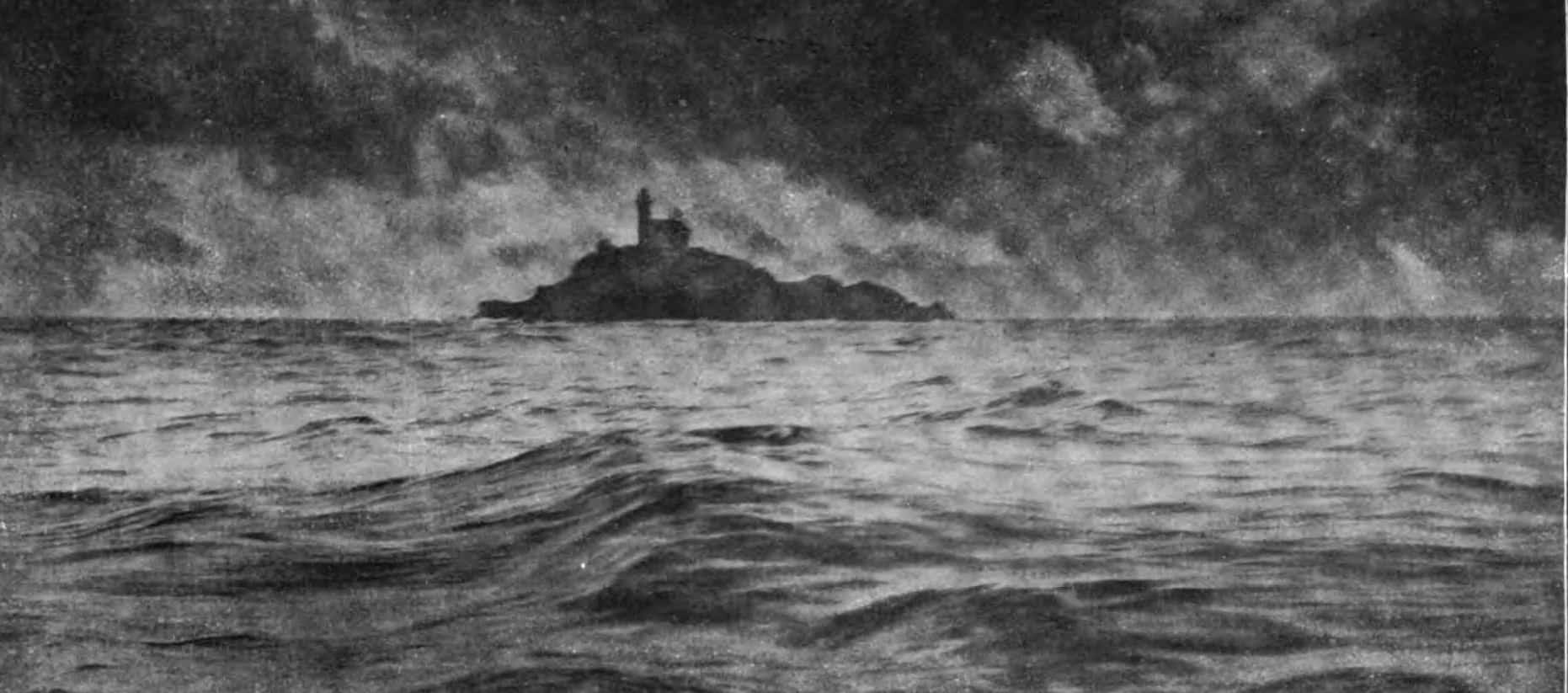
The Tévennec lighthouse is a storm-battered lighthouse located off the westernmost tip of Brittany that is rumored to be haunted. Before being automated in 1910, the lighthouse required a single keeper – a series of twenty-three keepers lived on the island until automation. According to legend, the first and second keepers were driven insane by ghostly voices, thought to be those of shipwrecked sailors who died on the island, demanding their departure. Applications to replace them were rare, so the French government began recruiting married couples to keep the lighthouse. Some unexplained deaths occurred, and a storm destroyed a part of the lighthouse while one of the keepers’ wives was in childbirth.
A rational explanation was later found for the ghastly screams heard among the rocks by the lighthouse keepers: divers discovered an underwater cave going under the island – the sinister wailing sounds heard on stormy nights were in fact made by waves rushing through the cave.
Practice your French: Listen to this podcast episode to hear first-hand accounts of visitors and workers of the lighthouse
The bleeding house of saint quentin

In the Aisne department of Hauts-de-France is the Bleeding House of St. Quentin. In the late 80s, a couple of newlyweds purchased a home in a working-class neighborhood of St. Quentin; a month after they moved in, they started hearing strange noises (banging pots and pans, chalk on a board, agonized moans and screams) coming from the basement. They didn’t worry too much at first, assuming the noises were coming from the neighbors’ house, until the wife found some red liquid dripping from the kitchen walls. After more and more red stains started appearing, the owners finally called the police who had the liquid tested: it turned out to be human blood. The owners called in a medium and a priest who had the house exorcized, but the strange events continued – the owners put the house up for sale, but no one wanted to buy it so it was eventually destroyed. When the rubble was excavated to make way for a new house, workers found the remains of about fifty World War I German soldiers.
Practice your French: Check out this video to watch the mystery of the bleeding house unfold
The bois-chenu basilica
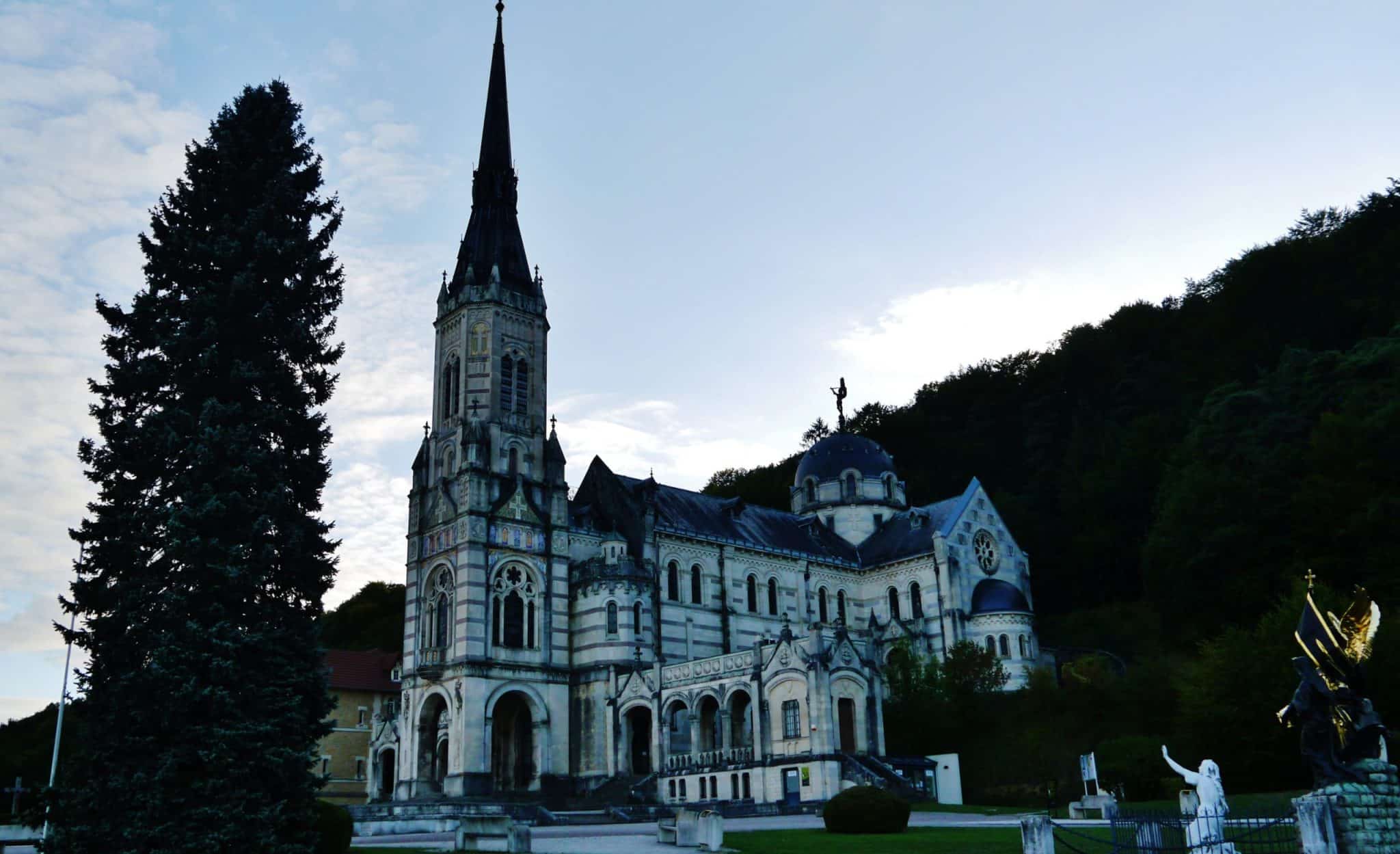
The Bois-Chenu Basilica, in Lorraine, is dedicated to Joan of Arc, who was burned at the stake after being accused of witchcraft. Since these events, the mysterious basilica is said to be a hotbed for paranormal activity. Growing up in the village, Joan of Arc had divine visions and heard voices while herding sheep in the surrounding hills. Her ghost has been seen many times roaming around the basilica and her childhood home; young girls are said to be particularly prone to these sightings
Practice your French: Check out this podcast series to learn all about Jeanne D’Arc’s life. It is a series from the podcast “Les Grandes Traversées” that our teacher Mahaut recommended as her top cultural picks of the season in the Fall 2023 issue of La Gazette!